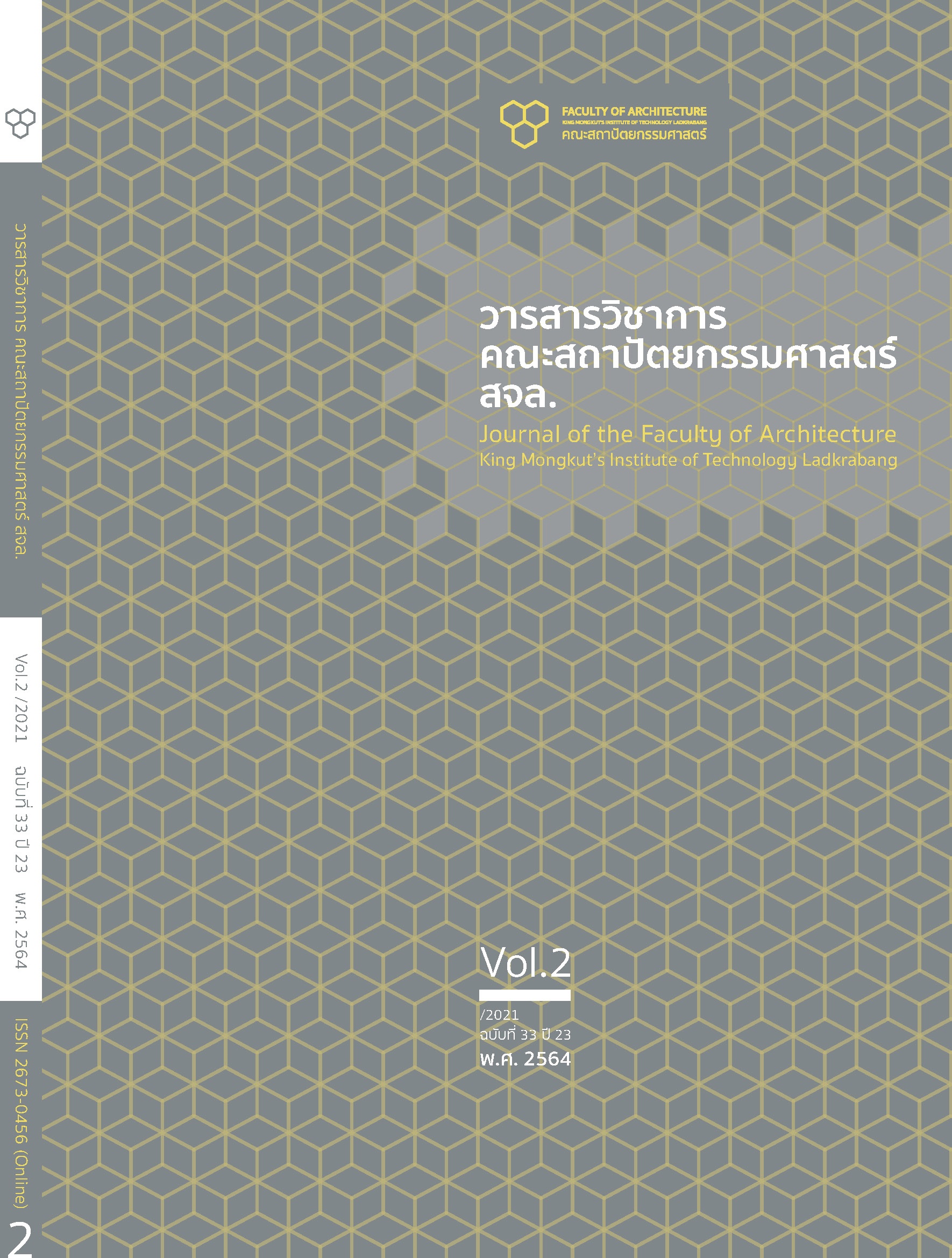The Application of Auspicious Chinese Animal Signs to Jewelry Design
Main Article Content
Abstract
This research aims to study the auspicious Chinese animal signs towards jewelry design according to materials used in Art and Craft objects of Chinese shines in Phuket Province. The samples were selected by using a specific random sampling method in Muang district, Phuket Province. Research samples were consisted of the experts who are related to Chinese culture, including consumers/wearers generally from the government agencies, private sectors and private entrepreneurs with a total of 100 people, besides three jewelry designers and three other business operators from the jewelry stores. The data were analyzed to explain the satisfactory results in the jewelry sketch design to lead to the production of the fine piece.
The results of this research show that 1) auspicious Chinese animal signs communicate through art appeared in the Phuket Provincial Shrines. It has ideological meanings, beliefs and auspiciousness. This leads to the design of jewelry to be worn on the body to create new dimensions and to enhance the auspiciousness of the identity of the meaning itself. 2) Application of auspicious Chinese animal signs to jewelry design applied by the concepts and patterns from the auspicious Chinese animals is related to the meaning of appearance, ideals, beliefs to represent the meaning of prosperity brought to the design through the process of creating codes in production on body decoration. The results of satisfaction assessment of jewelry sketch designs are at a high level of mean () = 4.35 with standard deviation (S.D = 0.60).
Article Details
This work is licensed under a Creative Commons Attribution-NonCommercial-ShareAlike 4.0 International License.
Copyright Transfer Statement
The copyright of this article is transferred to Journal of The Faculty of Architecture King Mongkut's Institute of Technology Ladkrabang with effect if and when the article is accepted for publication. The copyright transfer covers the exclusive right to reproduce and distribute the article, including reprints, translations, photographic reproductions, electronic form (offline, online) or any other reproductions of similar nature.
The author warrants that this contribution is original and that he/she has full power to make this grant. The author signs for and accepts responsibility for releasing this material on behalf of any and all co-authors.
References
กนกพร ศรีญาณลักษณ์. (2558). การสื่อความหมายของภาพมงคลจีน. วารสารจีนศึกษา. 4(4), 22-43.
จารุทัศน์ กาญจนอักษร และวรรณวิภา สุเนต์ตา. (2562). โครงการออกแบบเครื่องประดับอวยพรจากสัญลักษณ์มงคลแบบจีน. วารสารมหาวิทยาลัยศิลปากร. 12(4), 1206-1226.
ชลูด นิ่มเสมอ. (2559). องค์ประกอบของศิลปะ. กรุงเทพฯ: อมรินทร์.
ชาติ ภาสวร. (2556). การศึกษาวิวัฒนาการเชิงสัญลักษณ์และความหมายของลวดลายประดับจีนตามขนบ. (รายงานการวิจัยฉบับสมบูรณ์ คณะสถาปัตยกรรมศาสตร์, สถาบันเทคโนโลยีพระจอมเกล้าเจ้าคุณทหารลาดกระบัง).
ไชยรัตน์ เจริญสินโอฬาร. (2555). สัญวิทยา โครงสร้างนิยม หลังโครงสร้างนิยมกับการศึกษารัฐศาสตร์. พิมพ์ครั้งที่ 2. กรุงเทพฯ: วิภาษา.
นพดล สมฤกษ์ผล. (2552). ความเชื่อและพฤติกรรมการเลือกซื้อเครื่องประดับอัญมณีที่ตรงกับราศีเกิดของประชาชนในจังหวัดกรุงเทพมหานคร. (วิทยานิพนธ์บริหารธุรกิจบัณฑิต สาขาบริหารธุรกิจ บัณฑิตวิทยาลัย, มหาวิทยาลัยกรุงเทพ).
นพพร ประชากุล และวรรณพิมล อังคศศิริสรรพ, ผู้แปล. (2551). มายาคติ [Myth]. กรุงเทพฯ: คบไฟ.
ประทุม ชุ่มเพ็งพันธ์. (2544). สัตว์มงคลจีน. กรุงเทพฯ: ชมรมเด็ก.
พรพรรณ จันทโรนานนท์. (2546). วิถีจีน. กรุงเทพฯ: ประพันธ์สาส์น.
พรพรรณ จันทโรนานนท์. (2530). ฮกลกซิ่ว : โชค ลาภ อายุยืน. กรุงเทพฯ: มติชน.
ฟริตจอฟ คาปรา. (2537). เต๋าแห่งฟิสิกส์ [The Tao of Physics]. (วเนช, ผู้แปล). กรุงเทพฯ: ดอกหญ้า.
มัณฑนา ทองสุพล และกนกเนตร พินิจด่านกลาง. (2560). การศึกษาเอกลักษณ์เครื่องประดับไทย 4 ภาค เพื่อประยุกต์ใช้ในการออกแบบเครื่องประดับเงินที่สอดคล้องกับความต้องการของกลุ่มผู้ใช้เครื่องประดับร่วมสมัย. วารสารวิถีสังคมมนุษย์. 5(1), 135-165.
วรางคนางค์ วรรณตุง และนิรัช สุดสังข์. (2553-2554). การพัฒนารูปแบบเครื่องประดับเงินจากอัตลักษณ์ชาวเขาเผ่าลีซอ (ลีซู) หมู่บ้านศรีดงเย็น อําเภอแม่แตง จังหวัดเชียงใหม่. วารสารวิชาการ ศิลปะสถาปัตยกรรมศาสตร์ มหาวิทยาลัยนเรศวร. 1(2), 69-80.
ศูนย์ข้อมูลอัญมณีและเครื่องประดับ. (2561). เจาะตลาดจีนด้วยเครื่องประดับแนวความเชื่อและโชคลาง. สถาบันวิจัยและพัฒนาอัญมณีและเครื่องประดับแห่งชาติ (องค์การมหาชน). เข้าถึงได้จาก https://www.thaitextile.org/th/insign/detail.286.1.0.html
สุภางค์ จันทวานิช. (2558). ทฤษฎีสังคมวิทยา. กรุงเทพฯ: วี.พริ้นท์ (1991).
อรศิริ ปาณินท์. (2530). รูปสัญลักษณ์แทนความหมายต่าง ๆ ในวัดจีน. วารสารหน้าจั่วว่าด้วยสถาปัตยกรรม การออกแบบและสภาพแวดล้อม. (7), 80-104.
อุษา อินทร์ประสิทธิ์. (2561). ความพึงพอใจการพัฒนารูปแบบเครื่องประดับเงินโบราณอำเภอศรีสัชนาลัย จังหวัดสุโขทัย. วารสารปาริชาต. 31(3), 225-236.
Saussure, F.D., (1959). Course in General Linguistics. Edited by Charles Bally and Albert Sechehaye in Collaboration with Albert Riedlinger. Translated, with an Introduction and notes by Wade Baskin. New York: McGraw-Hill.
Liu, Laurence. (1989). Chinese architecture. London: Academy Editions.
Curtin, B.A., (2008). semiotics and visual representation. Academic Journal of Architecture, (1), pp. 51-62.


